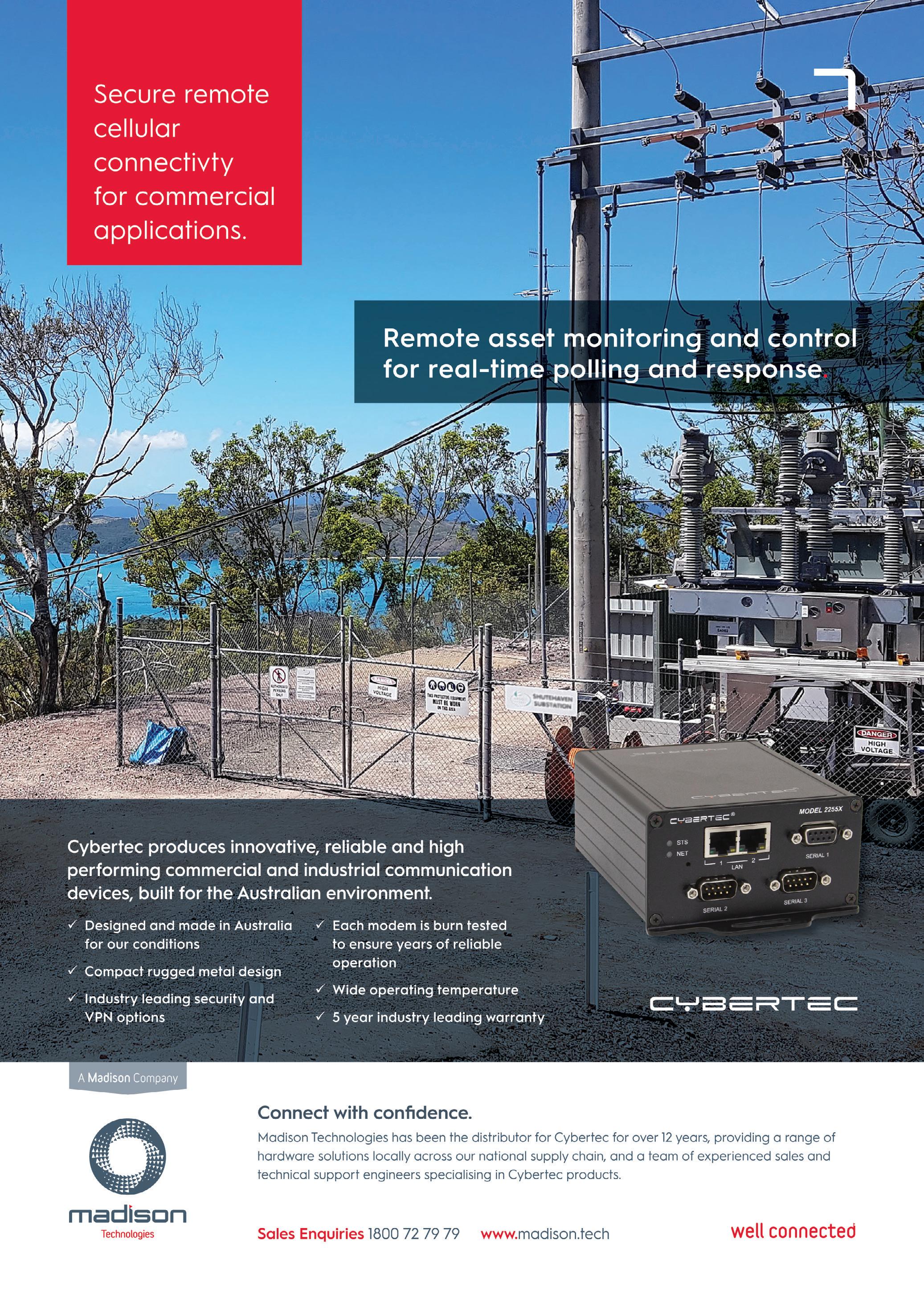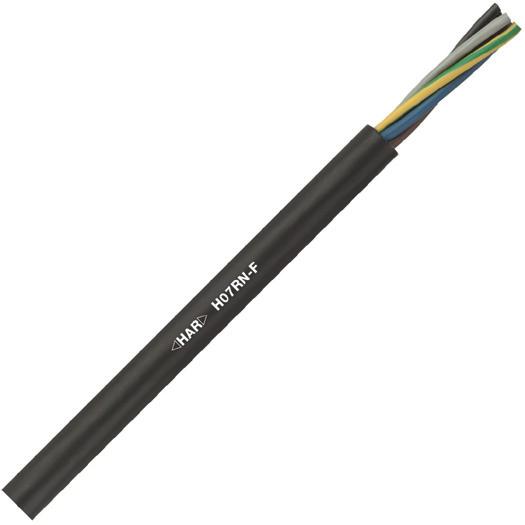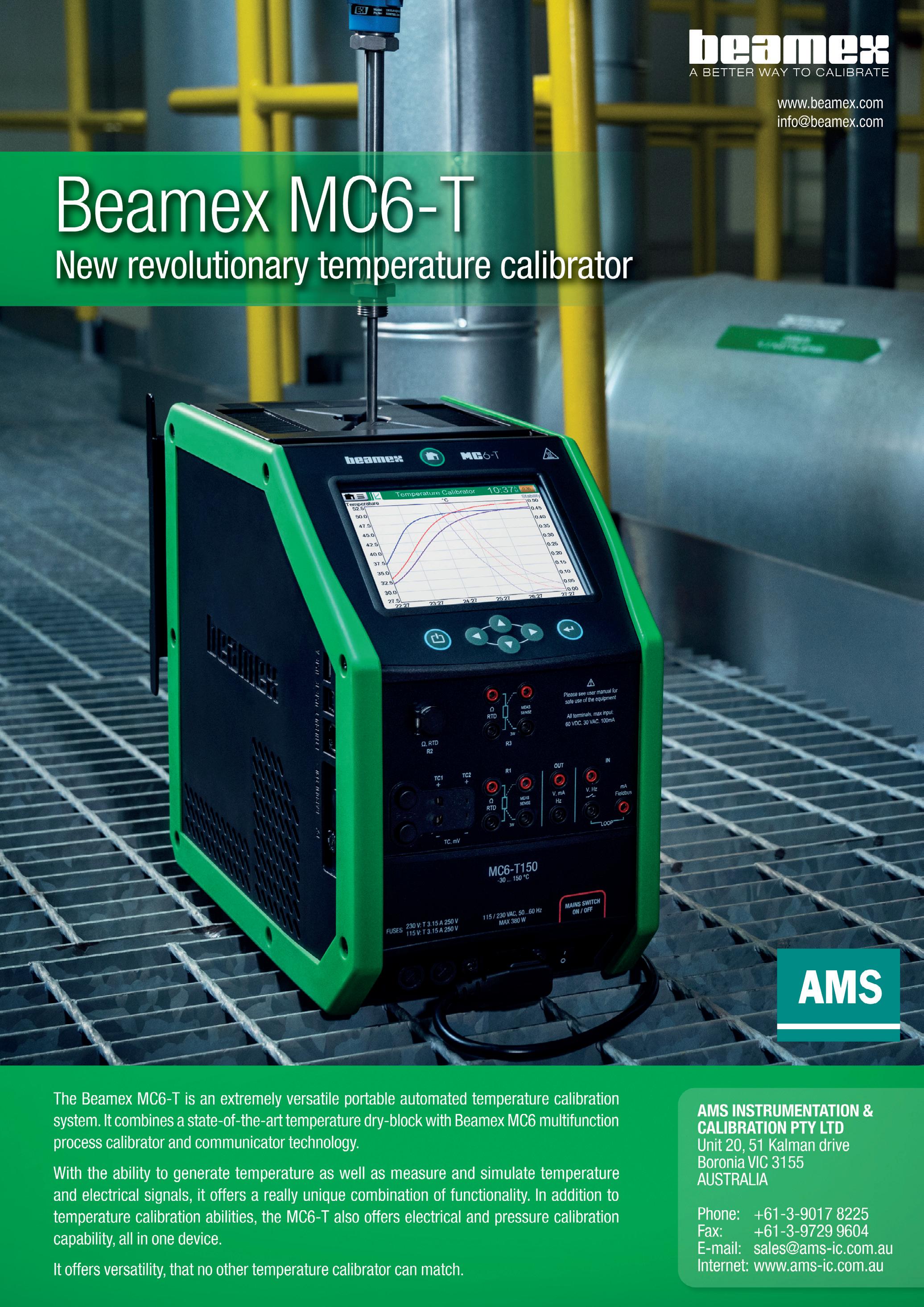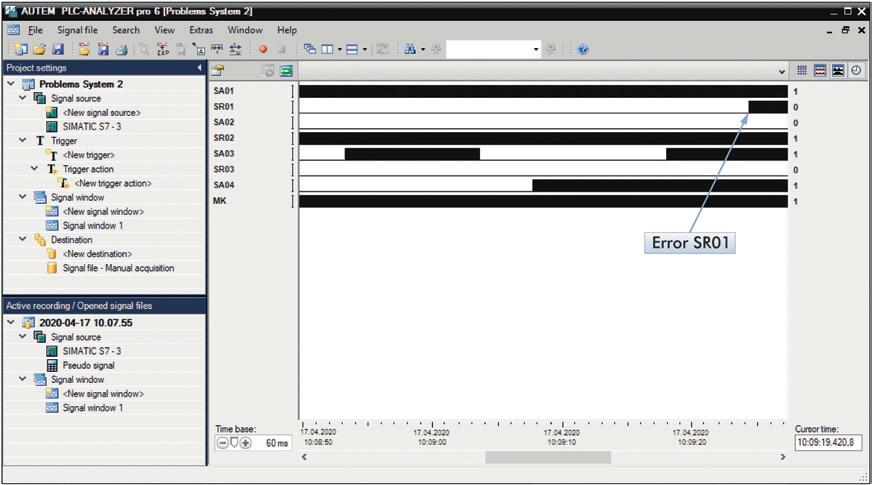
30 minute read
The challenges of IT/OT convergence
In this age of cheap data and connectivity, businesses are increasingly utilising operational data to improve reporting for stakeholders or push the boundaries of efficiency. This may be achieved through data aggregation or utilising cloud-based analytics and machine learning platforms. Implementing these technologies ultimately involves integrating information technology systems with operational technology systems, otherwise known as ‘IT/OT convergence’. While the benefits of collecting and utilising data will continue being realised for years to come, the convergence of these IT and OT systems presents immediate challenges for the teams that manage them, each of whom has different objectives.
IT teams are typically responsible for corporate networks, automating business processes, protecting information property and other financial and business documentation. The primary driver for the IT professional is to support and protect the confidentiality of the business and its employees.
OT teams maintain operational and industrial control systems (ICS), which drive processes that produce the product (or service) that the business sells. Downtime costs significant money and thus the primary driver for the OT professional is to maintain the availability and integrity of the system.
As IT/OT systems converge, the control systems within utilities, resources, manufacturing and infrastructure companies are becoming more connected than ever before and as such are at greater risk of cyber attack. Horror stories have circulated about oil pipelines and car manufacturing lines being shut down due to malware, worms and zero-day exploits. We also hear about poorly secured building automation networks being hijacked, resulting in hundreds of employees being unnecessarily evacuated and a loss of productivity.
Understandably, OT professionals are concerned about connecting to corporate IT systems given that most cyber breaches are unintentionally introduced by human error through USB devices, email phishing, poor password management or social engineering. In contrast, IT professionals are concerned about connecting to older, unsupported legacy OT systems or control networks designed with little consideration to cybersecurity.
The first step in developing a cybersecurity strategy should be to establish a risk profile for every part of the system. It may help to break this down into functional ‘zones’ and understand what network connections (or ‘conduits’) are required for that zone to operate. Protect these conduits using a technology that fits best, be it firewalls, access control list (ACL), an industrial security appliance or a data diode.
Sometimes the single biggest change one can make to an ICS network is to upgrade to managed switches. With managed switches one can control, segment and monitor the health of the network. Additionally, managed switches offer VLAN integration, redundancy and additional security features such as port locking so nobody can connect an unauthorised (and potentially risky) device to the network.
Consider also using change management software that has autosave and check-in features, which allow you to roll back any changes to ICS configurations, whether authorised or unauthorised. It is desirable for your change management software to be able to detect any unauthorised changes resultant of a potential cyber breach.
It is also important to understand that cybersecurity tools designed for modern IT environments may not suit a legacy ICS designed for a network of yesteryear. Consider, for example, an ICS that is endof-life with known vulnerabilities that can’t be patched and is too costly to replace. It still needs to be secured, and while investigating for vulnerabilities, if IT runs a port scan across the ICS network, it may lock up a PLC and shut down production for 24 hours. This situation can be avoided using passive scanning technologies that don’t introduce new traffic on the network but instead inspect every packet of data. Tools are available that can detect and audit network assets, monitoring for configuration changes and anomalous behaviour, while mapping out the source and destination of all traffic. If there is data flowing to or from an ICS it can be identified and tracked.
A good reference point for developing an IT/OT security framework is provided by the Australian Cyber Security Centre (ACSC), which is introducing various guidelines and frameworks for our public services and critical infrastructure operators. Adopting the IEC-62443 zones and conduits concept is also highly recommended when securing an industrial control system network.
Irrespective of the technologies used when protecting a control system, it’s important that the approach is collaborative between IT and OT teams. Be sure to work with vendors who have a multidisciplinary team, with expertise in both IT and OT environments, and who can offer training and support for the products they supply.
Kade Miller is a passionate technology and communications professional with over 11 years’ experience in industrial networking, wireless telemetry, electronic engineering, Internet of Things (IoT) and data acquisition solutions. A cybersecurity enthusiast, Kade has further interests in data science and machine learning.

ETHERCAT TO MODBUS AND PM GATEWAY The ICP DAS ECAT-2610-DW is an EtherCAT to Modbus RTU and power meter gateway.
In addition to the EtherCAT to Modbus RTU gateway function of the ECAT-2610, the -DW model can integrate smart meter slave devices into EtherCAT control systems through a special configuration file provided by ICP DAS. The EtherCAT master can access RxPDO and TxPDO to connect multiple smart meter slave devices such as the PM-3033/3133/3114/3112. It can achieve a more diversified energy management program.
The ECAT-2610(-DW)/2611 communicator can be used to connect non-networked industrial devices and equipment to an EtherCAT system. It allows serial-based RS-232/422/485 industrial devices and equipment to be easily integrated into an EtherCAT control system without the need to make any changes to the device. The ECAT-2610-DW is a DWORD version of ECAT-2610 that is suitable for smart power meters of the PM-3000 series, supporting up to six power meter connections.
The ECAT-2611 series provides a data exchange buffer that allows two different systems (EtherCAT Master and the Modbus RTU Master) to exchange data easily and faster for more diverse applications.
ICP Electronics Australia Pty Ltd
www.icp-australia.com.au

FOOD-GRADE SOFT GRIPPER The OnRobot food-grade soft gripper is able to pick a wide array of irregular shapes and delicate items in food and beverage, cosmetics and pharmaceuticals production, as well as manufacturing or packaging.
The flexible electric gripper uses three interchangeable silicon-moulded cups in star and four-finger configurations to pick up almost any small object under 2.2 kg with a delicate, precise touch. It is food-grade certified (complies with FDA 21 CFR for non-fatty items and EC 1935/2004) and, unlike traditional vacuum grippers, requires no external air supply, so it can reduce both cost and complexity.
OnRobot’s One System Solution is a platform that provides a unified mechanical and electrical interface between leading robot arms and any OnRobot end-ofarm tooling (EoAT). The One System Solution has been expanded to include integration with robots from ABB Robotics and Hanwha Precision Machinery.
While the soft gripper is suitable for food and beverage applications, it also provides flexible, delicate gripping for manufacturing and packaging. Grip dimensions ranging from 10 to 118 mm are possible depending on the cup used.
Scott Automation & Robotics Pty Limited
www.scottautomation.com
DEVELOPMENT AND SIMULATION TOOLS MathWorks has introduced Release 2020a with expanded AI capabilities for deep learning. Engineers can now train neural networks in the updated Deep Network Designer app, manage multiple deep learning experiments in an Experiment Manager app, and choose from more network options to generate deep learning code. R2020a introduces capabilities specifically for automotive and wireless engineers in addition to hundreds of updated features for all users of MATLAB and Simulink.
The new release introduces an enhanced Deep Learning Toolbox that helps users manage multiple deep learning experiments, keep track of training parameters, and analyse and compare results and code with the Experiment Manager app. Users can also interactively train a network for image classification, generate MATLAB code for training and access pre-trained models with the Deep Network Designer app.
Additionally, GPU Coder now offers a more expansive set of networks to implement AI systems on cloud and edge devices, including Darknet-19, Darknet-53, Inception-ResNet-v2, NASNet-Large and NASNet-Mobile.
R2020a also includes three new products. Motor Control Blockset contains a library of motor control algorithms optimised for generating compact code as well as out-of-the-box support for multiple motor control hardware kits. Simulink Compiler lets engineers generate standalone applications, web apps and software components from Simulink models, enabling simulations to run without installing Simulink. MATLAB Web App Server offers controlled access from a browser to MATLAB web apps deployed across a user’s organisation.
For wireless engineers, MATLAB support for 5G and Wi-Fi 6 technologies has expanded with additional support for waveform generation and cell detection.


FLOW METER McCrometer’s V-Cone flowmeter is a differential pressure instrument that is suitable for use with liquid, steam or gas media in rugged conditions where accuracy, low maintenance and cost are important. The V-Cone is especially useful in tight-fit and retrofit installations.
The V-Cone is designed for today’s most challenging oil and gas production, chemical, food and beverage, plastics, pharmaceuticals, district HVAC, textile, power, water and wastewater applications.
With flow conditioning built into its sensor design, its centrally located cone interacts with the fluid steam, reshaping the velocity profile to provide a stable signal that increases measurement accuracy. The pressure difference exhibited between the static line pressure and the low pressure created downstream of the cone is measured via two pressure-sensing taps, one placed slightly upstream of the cone and the other located in the downstream face of the cone itself. The pressure difference is then incorporated into a derivation of the Bernoulli equation to determine the fluid flow rate.
The V-Cone flow meter is available in flanged, threaded, hub or weld-end as standard with special connections available on request. It is said to offer better accuracy and repeatability, wider rangeability, installation flexibility and reduced maintenance.
AMS Instrumentation & Calibration Pty Ltd
www.ams-ic.com.au
COMPACT MANAGED SWITCHES The Hirschmann Gecko 8TX and Gecko 8TX/2SFP managed switches offer four to eight fast Ethernet ports and the option for two Gigabit SFP slots to save space and cost while increasing bandwidth.
Updated features of the Gecko switches include VLAN support as well as the MRP protocol to complement existing RSTP support, and IGMP snooping for multicast control. Management and monitoring of the device has further been enhanced with the addition of an SNTP client for time synchronisation to ensure that the log files and information generated are accurate and useful. EtherNet/IP and Profinet industrial profiles can be used to easily integrate the device into the application.
These additions are said to make the GECKO switches a fully functional light managed switch, with a low-cost entry point, a small footprint and eco-friendly power consumption.
Control Logic Pty Ltd
www.controllogic.com.au




SUBMERSIBLE PUMP CABLE The ÖLFLEX H07RN-F, Enhanced version, is a rugged rubber cable that is suitable for many robust and watersubmersible applications. A special rubber sheath on the power and control pump cable, with improved submersible conditions, makes the LAPP H07RN-F Enhanced version suitable for use in industrial and agriculture use in longtime submersion down to 100 m without interruption.
The rubber sheath of the H07RN-F Enhanced is halogen-free and flame-retardant for industrial areas with a high density of people or valuable assets. The black rubber sheath also gives UV and ozone resistance up to +90°C. The cable is available in many variations from single-core to multicore and up to 16 mm conductor size and 185 mm conductor size.
LAPP Australia Pty Ltd
lappaustralia.com.au


CLOUD-CONNECTED RADAR LEVEL INSTRUMENT Endress+Hauser has launched the Micropilot FWR30, its first cloud-connected radar, to provide full transparency in the storage and transport of liquids. Said to be the world’s first 80 GHz wireless IIoT sensor, it combines industrial technology and user-friendly digital services in one device. The instrument’s continuously recorded measurement data can be accessed at any time from anywhere due to the device’s cloud connection, with communication made possible by an integrated SIM card.
Installation is easy and can be done in less than 3 min. An integrated battery allows operation without an external power supply — a particular advantage for measuring points that are difficult to access. The compact device is suitable for stackable tanks and enables a plug-and-play solution for flexible and easy installation.
In addition to the measured level, users receive information on the location of their storage tanks and containers via the cellular communication system. The instrument provides facts where previously only assumptions were possible, helping users optimise logistic and storage processes and save time by providing continuous and easy access to inventory information.
The product can be used for level measurement and inventory management of mobile and stationary plastic tanks. The free radiating measuring device covers measuring ranges up to 15 m and temperatures between -20 and +60°C.
Users can choose from a broad range of services that include Netilion Value and SupplyCare Hosting. All digital software applications can be used on various end devices and comply with security and data protection requirements.
Endress+Hauser Australia Pty Ltd
www.au.endress.com



AI INFERENCE PLATFORM The Neousys Nuvo-7166GC-T4 AI inference platform features two PCIe slots that support an NVIDIA Tesla T4 inference accelerator to provide 8.1 TFLOPS in FP32 and 130 TOPs in INT8 for real-time inference based on a trained neural network model. Along with an Intel 9th/8th-Gen Core 6/8-core CPU and 64 GB DDR4-2666 RAM, it offers a balance between CPU, GPU and memory performance.
The system utilises Neousys’s Cassette Module that has an air tunnel design to guide intake air to flow through the passive heat sink of Tesla T4 GPU. The Cassette Module is equipped with a second fan to deliver air flow for a second performance PCIe card installation. This cooling design provides operating temperatures of up to 60°C with sustained 100% CPU and GPU loading.
The system also incorporates an M.2 NVMe interface that supports fast disk access and USB 3.1 Gen2 and GbE PoE ports for data input. The Cassette Module also offers an additional Gen3, x8 link PCIe slot for installing a high-performance PCIe card or a variety of sensor or image acquisition cards.
Backplane Systems Technology Pty Ltd
www.backplane.com.au


A ‘Tasti’ solution for a snack manufacturer

Products manufactured by Tasti Foods can be found on most supermarket shelves throughout New Zealand and Australia. Operating for three generations, the companyremains proudlyNewZealand owned and operated. The company began life back in the 1930s when two friends decided to start producing crystallised ginger. Fast forward over 80 years and now a workforce of over 250 produce a wide range of food products including co-manufacturing for a number of internationally recognised brands. They also supply nearly every supermarket chain in New Zealand and Australia with private label snack bars.
Tasti has been in its current purpose-built facility on the Te Atatu Peninsula for almost 50 years. In that time the factory has been extended and refitted several times as the company has grown. This modern facility is fully automated and designed to deliver the highest quality products, and Tasti continues to invest heavily in the required plant and facilities to ensure it can operate efficiently and to the highest quality standards.
Compressed air is mainly used for the automation of equipment in the manufacturing process. Some of the most sensitive pieces of equipment that compressed air powers at Tasti are the sophisticated robotic packing machines. Here, compressed air powers a number of critical tasks: from picking and making boxes, to placing the products in the boxes, and sealing the boxes ready for dispatch. The equipment operates very quickly — it is able to pack over 800 products a minute — however, to do this it relies on a constant supply of high-quality dry compressed air.
The existing compressed air system was struggling to reliably and efficiently meet requirements. Recurring failures in the compressed air line were creating downtime in some areas of production. At the same time as these issues were occurring, Tasti had begun planning the expansion of its facility to include a new hall specifically to manufacture its burgeoning wholefoods ‘free from’ product range.
As Tasti started the planning process forthe newbuild, elevated electricity bills had also led them to invite EnergyNZ to conduct an audit on the existing facility. One area the audit highlighted was that cost savings could be made by investing in compressors that were connected through a controller to each other, and were well staged. As the facility had developed over the years, so had the compressed air system grown and changed, and the existing compressors were therefore not linked together and had no staging control. There was also no ring main connecting all compressed air applications in the facility together to one compressed air source.
All ofthese factorstogetherled MatthewBarber, the Maintenance, Engineering and Environmental Manager at Tasti, to take the new build as an opportunity to address the entire compressed air system for the facility.
“We saw the expansion as the ideal opportunity to find one solution that would not onlysolve the issues we were having with the existing compressor system, but would also allow us to get the whole plant set up on a ring main from one central compressor room,” he said. “In addition, we were keen to digitalise the compressed air system — linking all of the compressed air equipment together for optimum efficiency and system control.”
Barber invited a number of compressed air providers to review their requirements and recommend a solution. Kaeser Compressors was one of those invited to tender for the project and was successful in meeting Tasti’s criteria. As a result, a complete Kaeser system was installed, as well as a ring main that nowconnects all ofthe compressed airapplications throughout the facility to the new system.
The system consists of three Kaeser ASD series rotary screw compressors alongside a complete airtreatment packagethat includestwo TD series refrigeration dryers. For control and digitalisation, the entire system is controlled and managed bya KaeserSigma AirManager4.0 mastercontroller.
For Tasti, incorporating the Sigma Air Manager controller enabled the company to have control of the entire system. The Sigma Air Manager utilises adaptive control to make air generation and treatment more reliable and efficient. By predictively calculating and comparing various operating scenarios, it selects the most efficient settings to suit Tasti’s specific needs at anyone time. Compressor flow rate and energyconsumption are therefore always optimally matched according to actual air demand. In combination with the integrated multi-core processor industrial PC, the adaptive control is able to ensure optimised performance for Tasti at all times.
Now up and running, the new Kaeser system is delivering a reliable, efficient and high-qualitysource of drycompressed airthroughout the facility.
“The new Kaeser compressed air system has helped us solve a number of issues,” Barber said. “The SAM 4.0 in particular has allowed us to develop a fully connected compressed air system, giving us a lot of control over, for example, our energy usage.”


CHALLENGES IN THE MAINTENANCE OF COMPLEX PLC-DRIVEN SYSTEMS
PLCs are now widespread in process control and automation systems and there is a trend towards increased complexity of such systems. The increased amount of information about processes leads to their improvement and increased efficiency, but it also leads to increases in PLC code size and complexity. Consequently, commissioning and maintenance of such systems is often a real challenge. In all but the simplest installations, there is a frequent need to synchronise operation of a number of PLCs — actions taken in one part of the system affect actions that the rest of the system may need to take. PLC programs never shrink in size — almost any code modifications increase the code size. The more complex a system, the more difficult it is to predict and later identify all the side effects of any code changes.
The trends described above lead to three major problems that control engineers face: 1. Verifying correctness of system operation at the commissioning stage and then locating and fixing any issues that often emerge in both the startup phase and in early operation of a system. 2. Managing changes to PLC code in running installations, detecting any side effects resulting from the changes. 3. Identifying the sources of any system malfunction as systems age and wiring, sensors and actuators operate less reliably.
In many cases control systems problems have the form of ‘gremlins’ — sporadic faults appearing and disappearing seemingly at random. It may be a matter of PLC code running ‘off the rails’ due to a randomly misbehaving sensor or an unreliable electrical contact. It may be that the code which works as intended suddenly fails because it does not handle certain external events occurring in a particular sequence or at particular times. Causes for such intermittent and often very short-lasting faults are notoriously hard to identify. This is the worst kind of problem a control engineer may face, and while tightly monitoring the system 24 hours a day may allow to catch the glitch sometimes, it does not always work and is always expensive.
Another problem is that maintenance of a system often involves making changes to the PLC code written by somebody else in the past. If the code is sufficiently complex — and it often is — making such changes necessitated by system modifications or required by the end user is fraught with risks. It may be very difficult to predict what a change can lead to in terms of side effects.
Introducing PLC-Analyzer pro 6
The German company AUTEM offers PLC-Analyzer pro 6 — software with unique ability to assist in tracking and diagnosing PLC-related problems. PLC-Analyzer is a purely software solution: no additional hardware is required. It can connect to multiple PLCs at the same time, monitor their internal tags and record them with no need to change or add to the PLC code. PLC-Analyzer can be connected to a PLC via its programming interface and


Fieldbus Specialists
www.fieldbus.com.au
also, if the PLC supports it, via Ethernet or the Internet. Multiple PLCs, possibly of different types, can be simultaneously monitored in real time in the same window.
All values monitored by PLCAnalyzer can be recorded and subsequently re-played onscreen. Recorded data is accurately timed and the timing information can be easily retrieved. Project files can be used to automate frequently recurring acquisition sessions.
Additional hardware supplied by AUTEM enables the monitoring of actual physical signals, both analog and digital, independently from the PLC, and these signals can be displayed in real time in the same window as internal PLC tags. This helps to detect situations where there is a discrepancy between the actual physical values and the information used inside the PLC code.
Recording of timed data coming from possibly a number of PLCs also facilitates the optimisation of the process, leading to material and energy savings and increased plant efficiency.
Recording of values and timing of process data, taken at different times during the life of an installation, enables the detection of process changes due to equipment ageing or changes in raw materials.
PLC-Analyzer pro 6 supports the definition of trigger conditions to intercept intermittent, randomly appearing events. A trigger, when activated, saves the pre- and post-event data and can also send an SMS message or an email.
In systems with robots or moving machinery, it is sometimes difficult to investigate cases where the machine movement seems to be taking place in an incorrect way or at an incorrect time. It is possible to connect a video camera to the PLC-Analyzer and obtain simultaneous recordings from the camera and recordings of internal tags in PLCs. Analysis of such recordings can show what is the nature and, most importantly, the cause of incorrect equipment behaviour.
Records of information internal to the process, made by software not related to the manufacturer of the plant equipment, PLCs or to the developers of PLC code may assist in resolving warranty claims. In any dispute an independent ‘second opinion’ is always of benefit.
Supported PLCs
The PLC-Analyzer supports the following PLC families: • Siemens S5, S7 and related models • Beckhoff TwinCat family • B&R PLCs • Pilz PSS and PNOZ controllers • AllenBradley ControlLogix and Compact PLCs and SLCs • Phoenix Contact PLCs • Bosch CL family of controllers • GE Fanuc Series 90, VersaMax, Nano, Micro, CNC and PMC • Fanuc R30i and R-J3i • Omron C, CV, CS1, NJ, NX, NY and CJ2 • Mitsubishi MELSEC Q, L, A, and FX • Schneider Modicon TSX Quantum, Momentum, Premium and Atrium • Schneider AEG TSX A250, A120 and Micro • Selectron • Jetter JetControl, Delta and Nano • Hitachi H, EH150 and Micro-EH • all PLCs based on CoDeSys software.
PLC-Analyzer supports current as well as legacy PLCs. For many of these PLCs the software originally supplied by the manufacturer may no longer be maintained and may not be able to offer the monitoring, recording and fault capturing required by engineers today. Even if a manufacturer’s software includes tracking and capturing capability, PLC-Analyzer users report that its functionality is superior to what native PLC-related software provides.
Conclusions
PLC-Analyzer pro 6 is an indispensable tool for system integrators to help at the commissioning stage. For companies with sophisticated automation and process control systems, it offers a means to resolve PLC-related problems as they arise, to optimise the processes and to monitor the systems for changes related to ageing of the machinery, and for condition monitoring.
Companies offering services in the area of PLC programming and code maintenance should make sure that the PLC-Analyzer pro 6 is included in their engineers’ toolboxes. And if a system involves legacy PLCs, there may be no software available for advanced troubleshooting: here PLC-Analyzer pro 6 is indeed an indispensable engineering tool. For more information please email: sales@fieldbus.com.au Figure 3: Correlating signals at different locations in the system.



MODULAR GATE BOXES The latest version of the Euchner MGB Multifunctional Gate Box allows users to design protection for guards that meets their individual requirements. The MGB2 Modular and the MGB2 Classic offer more variations, additional functions, different networking options and intelligent communication features for IoT applications.
The MGB2 Modular comprises a locking module incorporating submodules with control and display functions and a bus module for connecting to Profinet/ PROFIsafe. The guard locking submodules can be equipped with control elements such as push-buttons, selector switches, key-operated rotary switches or emergency stop buttons as needed. Two additional submodules allow users to integrate up to six different control elements in the locking module. The control elements can be replaced at any time during operation because the MGB2 Modular is hot pluggable. The MCM extension module can expand the MGB2 Modular’s functions further by adding up to four more submodules.
The MGB2 Classic version has a modular design just like the MGB2 Modular and the locking module submodules can also be fitted with individual control elements. Unlike the Modular variant, the MGB2 Classic version does not communicate via a bus system but is instead linked directly to the relevant control system. It is therefore a suitable solution for non-networked parallelwired installations. The system features two OSSD outputs, provides continuous diagnostic information via an LED indicator, and can be connected in series with up to 10 devices.
Treotham Automation Pty Ltd
www.treotham.com.au
DISTRIBUTION BOARDS Consistent with the ‘DB’ family of distribution boards, the newly released DB Essential from APS Industrial is custom designed for the demands of Australian industry and purpose built for compatibility with Siemens circuit breakers.
The DB Essential has been developed as a quality lightweight distribution board for high-end commercial and medium-duty industrial environments. The enclosure by KATKO has a fully welded construction and meets the highest IK rating against external mechanical impacts while maintaining an IP55 ingress rating.
Together these ratings make this range of distribution boards suitable for indoor and outdoor applications.
While the DB Essential does not offer a removable gear tray (as featured in the DB Ultimate), the DB Essential offers flexibility in equipment options due to careful design considerations and a range of features such as a dual quarter-turn locking system, a removable hinged escutcheon and door, and a continuous poured door seal. These features are complemented by a galvanised gear plate, dual earth neutral bars and a removable gland plate at the top.

APS Industrial
www.apsindustrial.com.au
Forerunner. Yesterday. Today. Tomorrow.

The Sensor People have been setting technological standards in industrial automation for more than 50 years. This is how we ensure the success of our customers in an industry that is ever evolving. As a forerunner who is shaping the technological milestones and innovations of tomorrow with curiosity and determination.

MACHINE VISION COMPUTER System performance plus reliability are critical factors for vision-based systems. In order to detect defects, vision systems need to perform fast and accurate analysis of objects. The Aplex AVS-504 is powered by 7th generation Intel processors to provide a multi-core processing platform with high-speed PCIe x16 expansion. High bandwidth GPU data access is essential for reliable image processing performance.
The AVS-504 is equipped with two SODIMM sockets supporting up to 32 GB of DDR4 system memory, two Gigabit RJ-45 ethernet connectors, four USB 3.0 ports, two USB 2.0 ports, four digital inputs, four digital outputs, two RS-232 ports and one RS-232/422/485 and one RS-422/485 port for communication. Two easily accessible 2.5″ SATA hard drives can be internally mounted for operating system and data storage.
Two full-size Mini-PCIe slots are provided on the motherboard, and the AVS-504 is also available with two or four expansions card slots. Various PCIe x16, PCIe x4, PCIe x1 and PCI slot combinations are available.
The onboard Intel HD graphics engine provides VGA and HDMI output with support for 4K UHD high-resolution displays. The AVS-504 is also capable of connecting to multiple GigE and USB 3.0 cameras. The AVS-504 also supports light source control ensuring that objects are correctly exposed during the imaging process.
Possible applications include automation control, 2D/3D measurement, surface inspection, PCB inspection, robotic arm guidance, textile inspection and label/barcode scanning.
Interworld Electronics and Computer Industries
www.ieci.com.au



UNIVERSAL PROCESS CONTROLLER Hanna Instruments has launched the HI510 Universal Process Controller. The HI501 is an advanced universal process controller that can be configured for many applications requiring monitoring or control of process parameters. The controller features a digital probe input that will automatically detect and update the meter with the parameter that it measures. The HI510 offers wall, pipe and panel mounting options.
The HI510 is designed to adapt to a user’s specific process control requirements. The meter has a large backlit dot matrix display for easy viewing and provides for an intuitive interface for set-up options. The controller utilises multicolour LEDs for easy viewing of the instrument’s status, including relay activation, alarm mode or hold status.
All programming operations are done through the low-profile vulcanised rubber keypad or with an RS485 connection to a PC running the HI92500 Windows-compatible software.
Hanna Instruments Pty Ltd
www.hannainst.com.au

DRIVE-INTEGRATED SAFETY MODULE ABB is providing integrated safety functionality for its all-compatible variable speed drives (VSDs) to simplify the engineering design process in machine manufacturing and automation. The plug-in PROFIsafe module (FSPS-21) removes the need for external safety components and reduces the need for configuration.
The FSPS-21 enables safe machine control and seamless safety communications between the drive and the PLC in a wide range of machines from conveyors to grinders. This is enabled through the PROFIsafe over the Profinet I/O communication protocol.
The module allows for control, safety and PC tool communication to the drive through one Ethernet cable, which simplifies installation and commissioning. The module simplifies commissioning because it requires no additional safety configuration in the drive and moreover reduces the need for training.
The FSPS-21 module is TÜV Nord certified and is compatible with ABB ACS380 machinery drives, ACS580 general-purpose drives and ACS880 industrial drives. The module offers Safe Torque Off (STO) and Safe Stop 1-time controlled (SS1-t) safety functions. It achieves SIL 3/PL e and is therefore suitable for demanding applications.
ABB Australia Pty Ltd
www.abbaustralia.com.au

LOCAL VALVE CONTROL SOLUTION The Rotork Local Hand Station is an actuator control panel optimised to control actuators or field devices located in difficult-to-access areas. It is suitable for applications such as large penstocks, where it is difficult to access the actuator due to height, in chamber applications where the actuator is located below the ground and space is limited, or for control when the actuator/device may be in a hazardous location.
Reliable local control is essential in many applications and the Local Hand Station provides a simple control panel interface between the actuator or field device and the DCS. It offers complete local override of DCS control signals to ensure localised maintenance activities can be performed safely without unexpected operation occurring.
Absolute control is critical to site safety so in addition to an Emergency Shutdown (ESD) button, the rotary selector switches have been used due to their increased resistance to sticking or jamming and the Local/Stop/Remote selector can be locked in any position.
The Local Hand Station can be pole or wall mounted and is ATEX and IECEx certified. Power can be supplied directly from the connected actuator, meaning that installation can be carried out with just a standard electrical cable. This prevents the need for any supplementary power supplies onsite.


DATA SENSING GATEWAY Powered by an Intel Atom E3815 processor and featuring three configurable COM, two LAN (one PoE), eight programmable GPIO, one HDMI and one USB 3.0, the UNO-420 provides a solution for connecting legacy equipment to mesh networks. Suitable for harsh industrial environments as well as limited space applications, the UNO-420 has a compact form factor and supports a wide operating temperature range of -20 to 60°C.
Enabling remote infrastructure management, the device supports Wi-Fi, 3G, 4G/LTE and NB-IoT wireless modules that facilitate long-distance data transmissions, over-the-air updates and real-time communication. The UNO-420 is also embedded with a Trusted Platform Module 2.0 that provides security for cloud-based data operations. The UNO-420 adopts a PoE-In design that allows the terminal to be powered via a LAN port, reducing wiring and minimising maintenance costs.
Featuring Advantech’s WISE-PaaS/EdgeLink protocol-conversion software, the UNO-420 supports more than 200 communication protocols, enabling data collection from legacy devices. It allows user-defined data acquisition periods for each input interface, reducing the volume of data transmitted and stored in the cloud. This combined with the software’s plug-and-play functionality reduces programming, streamlining application development and deployment.
Advantech Australia Pty Ltd
www.advantech.net.au












